A Look at the Most Beloved TV Families of All Time

From the pioneering The Goldbergs of the 1950s — a hit on radio that transferred Gertrude Berg’s popular Jewish mother Molly to newfangled TV — to The Goldbergs of today, with its nostalgia for the 1980s, the TV family has always been among the culture’s most beloved touchstones. Recalling the days when families still gathered together around the TV, we see ourselves, for better or sometimes worse, in these wonderfully satisfying multigenerational comedies and dramas.

Everett Collection
Moms who were always there, fathers who thought they knew best (they often did!), and their sons and daughters who experienced those eternal growing pains — how comforting to be invited into their homes for a good life lesson. Each episode is like a family reunion with people we knew on a first-name basis. It doesn’t get better than that.
Take a look through the decades at our scrapbook of memories, with many of the shows that we welcomed as part of our own families.
1950s families represented a much simpler time
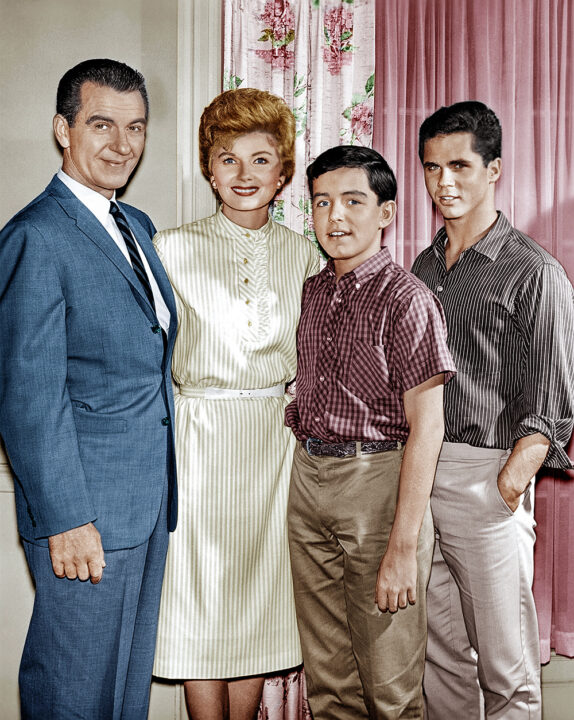
Everett Collection
TV’s first decade was an age of safe havens, with idealized families who became enduring icons, like Leave It to Beaver’s June Cleaver and her pearls, husband Ward and his words of fatherly wisdom, and Wally and the Beav, forever getting into scrapes. The Adventures of Ozzie & Harriet made us believe we were spending time with the actual Nelson family, as heartthrob sons Ricky and David grew up before our eyes. On Father Knows Best, Robert Young’s Jim Anderson dispensed wise advice to Bud, Betty and “Kitten,” role models all. Donna Reed epitomized the wholesome housewife in her self-titled show, while Danny Thomas projected showbiz pizzazz as an entertainer raising a family on Make Room for Daddy (later titled The Danny Thomas Show).
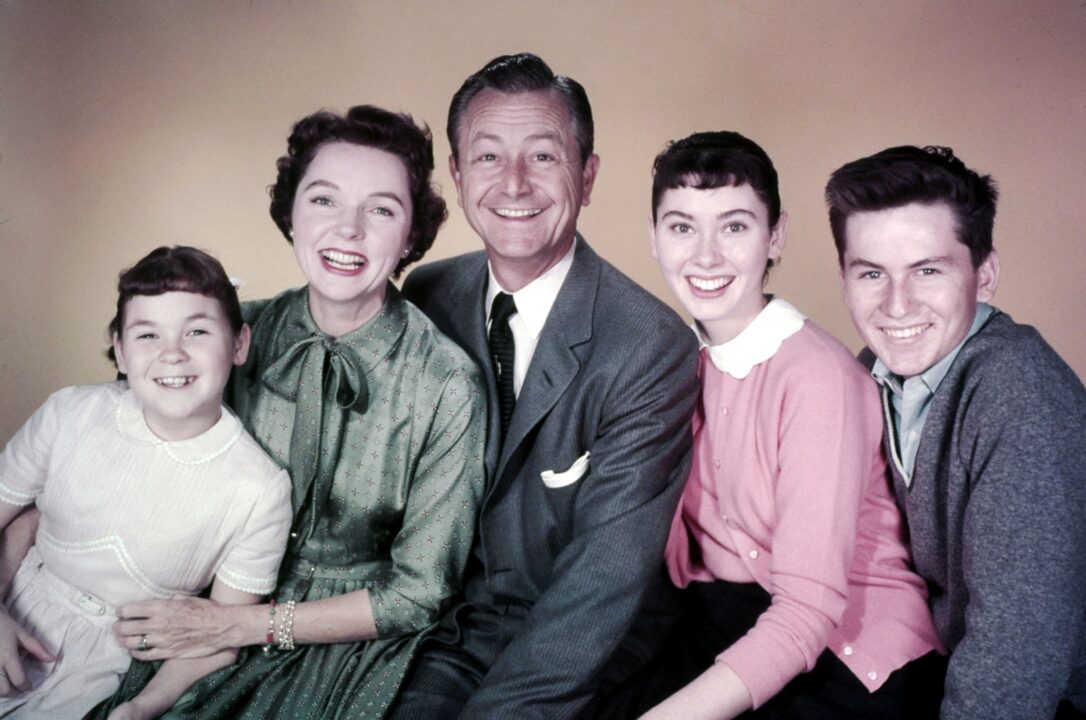
Everett Collection
But it was the blessed addition to the Ricardo family in the second season of smash hit I Love Lucy that made the biggest impact on ’50s TV. An estimated 44 million tuned in to watch Lucy give birth to “Little Ricky” on Jan. 19, 1953 — the same night Lucille Ball delivered her own son, Desi Arnaz Jr. — more than would tune into President Eisenhower’s inauguration the next day.
1960s TV families got a little wilder
As a rule, families got weirder and wackier in the 1960s, with the notable exception of national treasure Andy Taylor of Mayberry, the soft-spoken sheriff hero of The Andy Griffith Show. Raising sweet little Opie (Ron Howard) with the help of Aunt Bee (Frances Bavier) in this bucolic Brigadoon of North Carolina civility, Griffith brought natural warmth and wry serenity to Andy’s challenges of keeping the peace at home and in the local jailhouse.
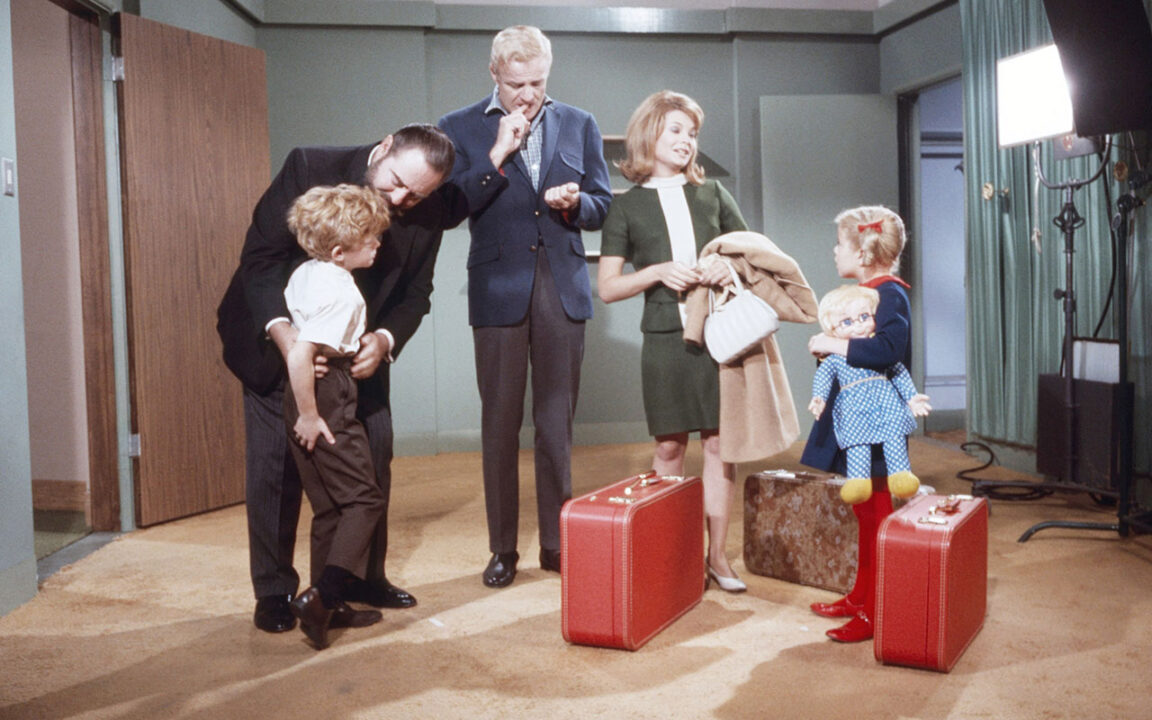
Everett Collection
Continuing the Father Knows Best tradition, Fred MacMurray as Steve Douglas presided over an ever-expanding brood through 12 seasons of My Three Sons (1960-72). And was there ever a wish-fulfillment fantasy as charmed as Family Affair, in which Manhattan bachelor Uncle Bill (Brian Keith) eventually warmed up to his role as guardian of orphaned Jody, Buffy and Cissy? Having a butler as devoted as Mr. French helped.
Still, abnormal was the norm in many family sitcoms. The Addams Family and The Munsters celebrated the macabre with their ghoulish outsider chic, and Bewitched brought Grace Kelly glamour to Elizabeth Montgomery’s portrayal of Samantha Stephens, the witch next door. The transplanted Clampetts of the raucous hit The Beverly Hillbillies befuddled their snooty neighbors, while the animated The Flintstones took us back to the Stone Age to suggest that cavemen (and women) weren’t really all that primitive. Yabba-dabba-doo!
1970s TV families started breaking boundaries
TV families went in two directions through much of the 1970s: either leaning toward nostalgia for simpler and happier days, or taking unusually realistic stock of who we were in those turbulent times.
Adapting Laura Ingalls Wilder’s beloved books of frontier life, Little House on the Prairie kept TV star Michael Landon planted firmly in the 19th century. Formerly Little Joe of Bonanza, Landon gained new fame as Charles Ingalls, ruggedly stalwart farmer and father to the adorable Laura (Melissa Gilbert) and her siblings Mary and Carrie. No matter the natural calamity amid the fruitful Midwestern plains, Charles held this family together. The same was true of the sprawling and tightly knit Depression-era clan The Waltons, another heartwarming drama embraced by an America seeking wholesome displays of traditional values. Richard Thomas as the idealistic John-Boy was first among equals in a show that felt like home, especially at lights out, as family members bade each other goodnight.
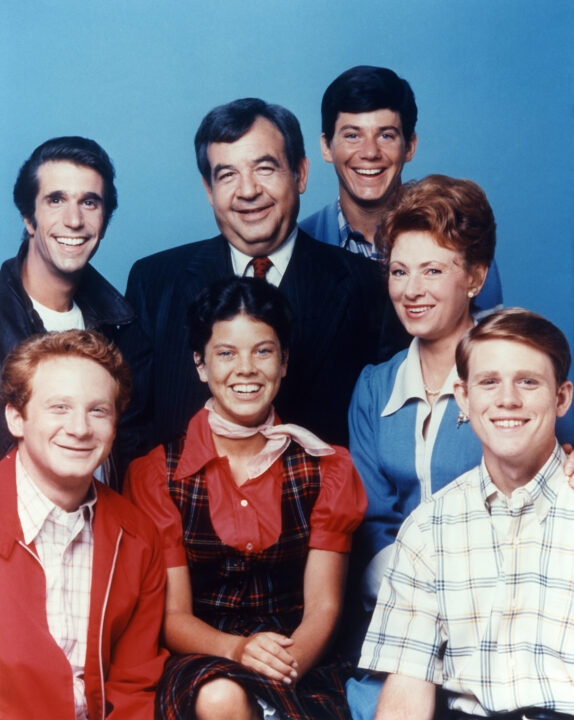
Paramount/Courtesy Everett Collection
In comedy, a throwback to the rock-’n’-roll 1950s made Happy Days a popular destination, with Ron Howard evolving from Mayberry’s Opie to naïve high schooler Richie Cunningham. Mr. and Mrs. C (Tom Bosley and Marion Ross) kept the home fires burning, welcoming Henry Winkler as the rebel Fonzie into the extended family. The blended family of The Brady Bunch would have been right at home in the 1950s as well.
But a revolution was brewing, and Norman Lear’s smash hit All in the Family brought the topical wars between generations into the mainstream with its unsparing yet hilarious portrayal of bigoted patriarch Archie Bunker (Carroll O’Connor) indelibly railing against changing times. Spinoffs included the outspoken Maude and the equally groundbreaking Good Times, depicting the Evans family getting by in an inner-city housing project.
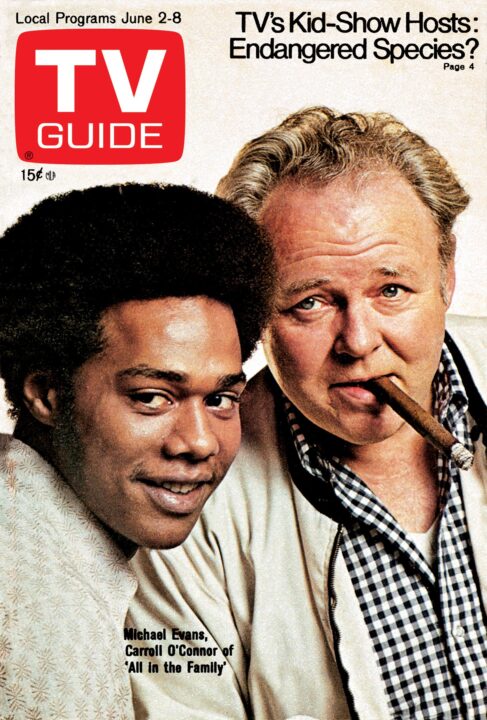
Viewers wept along with the Lawrences of Family as they dealt with modern-day issues including divorce and cancer, but even that paled next to the real-life exploits of PBS’ An American Family, an unprecedented documentary series depicting the fractures within the upper-middle-class Loud family.
The 1980s were made of traditional sitcoms and got soapy
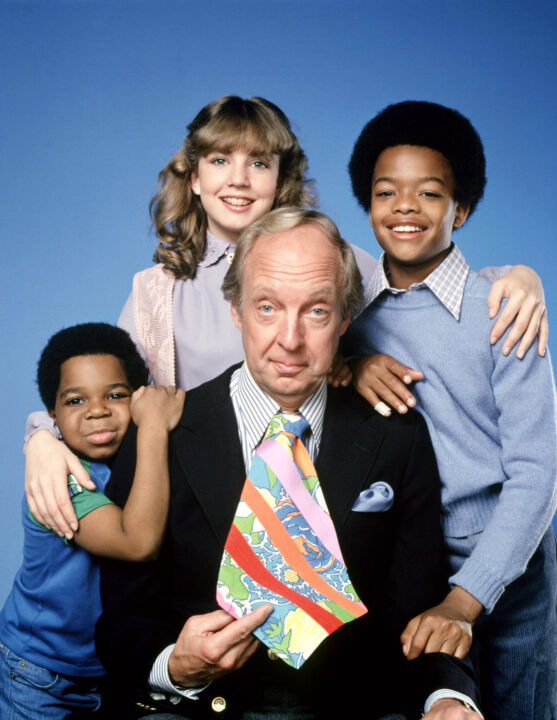
Columbia/Tri-Star / Courtesy: Everett Collection
The early 1980s introduced offbeat examples of integrated families, with Diff’rent Strokes and Webster built around breakout child stars (Gary Coleman and Emmanuel Lewis). But in 1984, the traditional family sitcom made a spectacular comeback with the phenomenal success of The Cosby Show. Long before its star’s fall from grace, the nation reveled in the lovable antics of the Huxtables. That show’s success helped make the Keatons of Family Ties household names — especially Michael J. Fox as Alex, the preppy son of former flower-power parents. By the late 1980s, “TGIF” had become a Friday destination for families, with the Tanners of Full House leading the way, while critical accolades greeted the perceptive 1960s coming-of-age memories of Kevin Arnold (Fred Savage) in The Wonder Years.

NBC/Courtesy Everett Collection
Primetime soaps were all the rage in the ’80s, with the combative Ewings of Dallas, the glittery Carringtons of Dynasty and the denizens of Knots Landing keeping us glued week after week.
1990s TV families brought working-class dysfunction
No TV family had more explosive success — and staying power — than The Simpsons, the animated misfits still going strong 30 years later. (It helps when no one has to age on camera.) Bratty Bart, clueless Homer, long-suffering Marge and precocious Lisa are uncannily timeless, even when skewering sacred cows of the moment. Almost as cartoonish were the dysfunctional Bundys of Married With Children, whose subversive take on the domestic sitcom helped launch the FOX network in the 1980s, while The Simpsons went on to define it.
Stand-up comedians became ’90s headliners, all hoping to achieve Cosby Show-level success with their visions of family life. Several succeeded, including the sardonic working-class appeal of Roseanne, the mock-macho shenanigans of Tim Allen in Home Improvement and Ray Romano’s too-close-for-comfort living situation, with his meddling parents (Doris Roberts and Peter Boyle) across the street, in Everybody Loves Raymond.

CBS/Courtesy: Everett Collection
From the 2000s to today, seeing more diversity
With a new century came a new family dynamic, as seen in HBO’s blockbuster The Sopranos. David Chase’s depiction of morally corrupt suburbanites Tony and Carmela Soprano redefined mob drama with pathos, dark humor and relatable domestic drama, making James Gandolfini and Edie Falco instant stars. Our identification with their mundane world only made the criminal subplots more jarring. And we’re still debating that (non)ending.

The farcical complications in the lives of the Pritchetts and Dunphys propelled the acclaimed Modern Family to critical and popular success, and helped foster a wave of socially and racially diverse comedy families, including the Johnsons of black-ish, the Huangs of Fresh Off the Boat and the Alvarezes of a reinvented One Day at a Time.
The hyper-verbal mother-and-daughter bond of Lorelai and Rory on Gilmore Girls was pure delight, making us laugh till we cried. But genuine tears of recognition are what make the Pearsons of This Is Us so special. As the show moves back and forth in time, the adult children recall their late father who helped his “Big Three” kids prepare for the adulthood they’re still trying to figure out, and we’re reminded how important TV’s families are in molding our own cultural identities.

Warner Bros. Television / courtesy Everett Collection
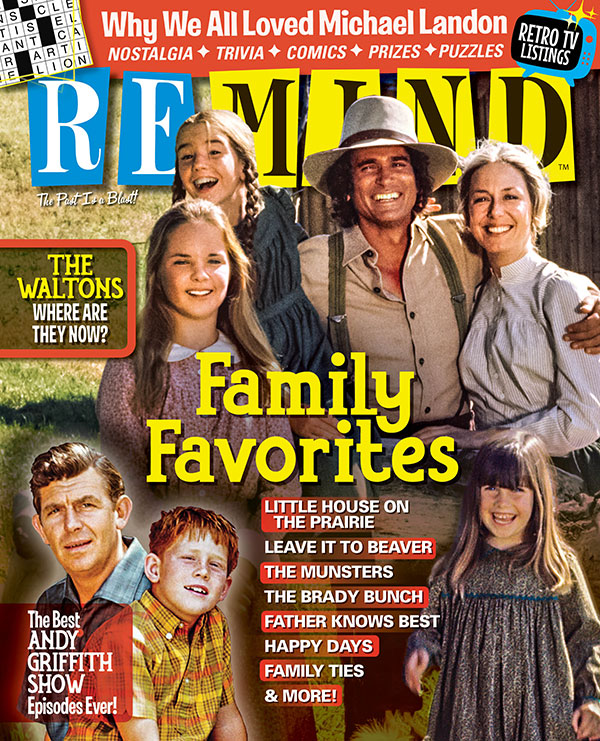
Favorite TV Families
April 2019
Celebrate the best of the best of TV families!
Buy This Issue